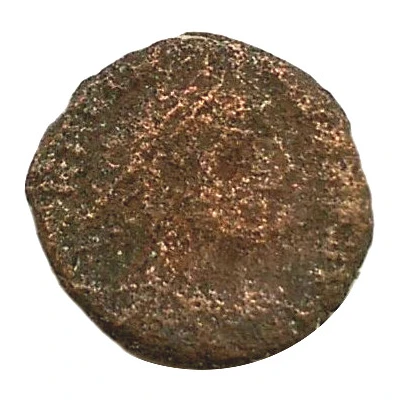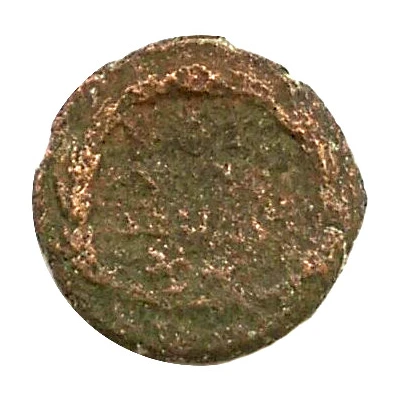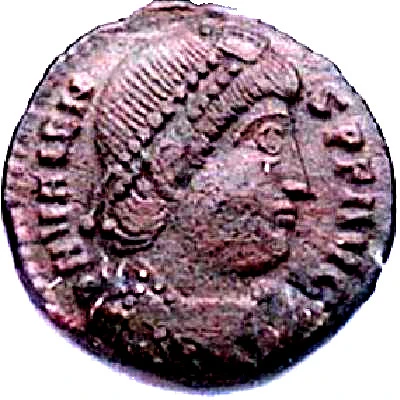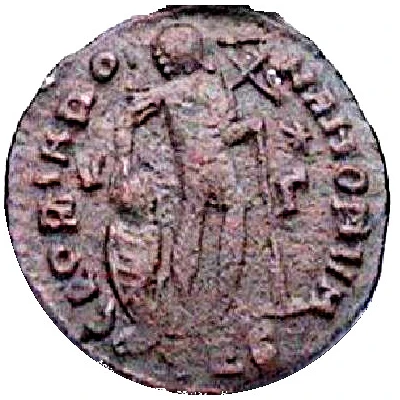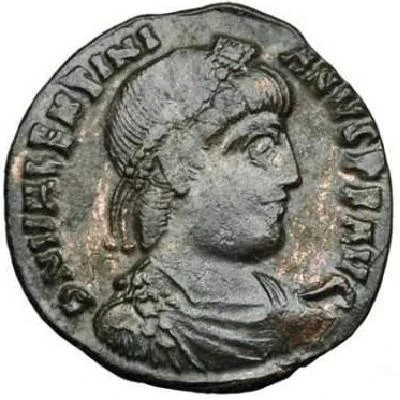
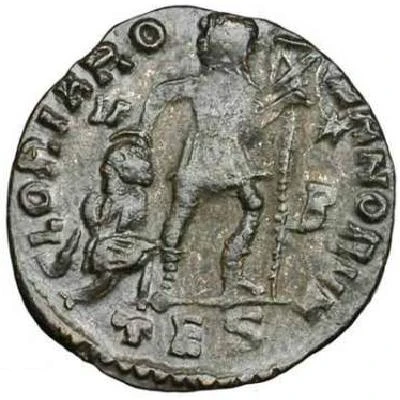

© American Numismatic Society (ANS)
Follis - Valentinianus I GLORIA ROMANORVM; Thessalonica
| Bronze | 3.27 g | 16.96 mm |
| Issuer | Rome › Roman Empire (27 BC - 395 AD) |
|---|---|
| Emperor | Valentinian I (364-375) |
| Type | Standard circulation coin |
| Years | 375-378 |
| Value | Follis (1⁄180) |
| Currency | Solidus, Reform of Constantine (AD 310/324 – 395) |
| Composition | Bronze |
| Weight | 3.27 g |
| Diameter | 16.96 mm |
| Thickness | 1.77 mm |
| Shape | Round (irregular) |
| Technique | Hammered |
| Demonetized | Yes |
| Updated | 2024-10-04 |
| Numista | N#169129 |
|---|---|
| Rarity index | 91% |
Reverse
Emperor walking right, head left, grasping bound captive at the top of the head with right hand and holding labarum with left hand.
Mintmark in exergue.
Script: Latin
Lettering:
GLORIA ROMANORVM
V | ⭑
B
TES
Translation: Gloria Romanorum: "To the Glory of the Romans".
Interesting fact
One interesting fact about the Follis - Valentinianus I coin is that it features a unique blend of Christian and pagan imagery. On one side, the coin bears the image of Valentinianus I, while the other side features the legend "GLORIA ROMANORVM" (Glory of the Romans) surrounded by a wreath, which was a common motif in Roman coinage. However, the wreath on this coin is made up of leaves and berries, which is a departure from the traditional laurel wreaths used on Roman coins. This blending of Christian and pagan elements reflects the religious and cultural shifts that were taking place in the Roman Empire during the 4th century.
